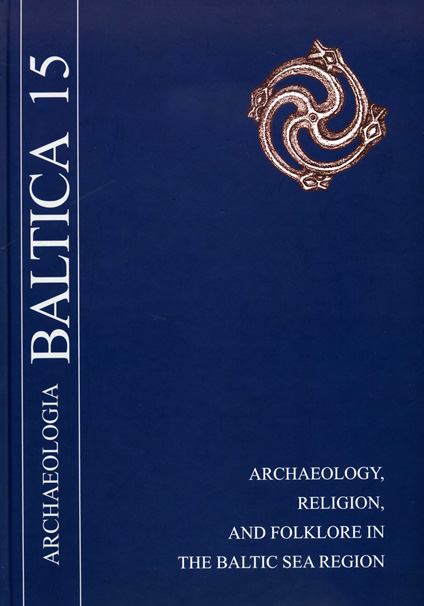Volume 15 (2011): Archaeology, Religion and Folklore in the Baltic Sea Region, September 2011

Order by:
Pub. online: 20 Sep 2011
Type: Introduction
 Open Access
Open Access
Journal:
Archaeologia Baltica
Volume 15 (2011): Archaeology, Religion and Folklore in the Baltic Sea Region, pp. 7–13
Pub. online: 20 Sep 2011
Type: Article
 Open Access
Open Access
Journal:
Archaeologia Baltica
Volume 15 (2011): Archaeology, Religion and Folklore in the Baltic Sea Region, pp. 16–21
Abstract
Pub. online: 20 Sep 2011
Type: Article
 Open Access
Open Access
Journal:
Archaeologia Baltica
Volume 15 (2011): Archaeology, Religion and Folklore in the Baltic Sea Region, pp. 22–30
Abstract
Pub. online: 20 Sep 2011
Type: Article
 Open Access
Open Access
Journal:
Archaeologia Baltica
Volume 15 (2011): Archaeology, Religion and Folklore in the Baltic Sea Region, pp. 31–34
Abstract
Pub. online: 20 Sep 2011
Type: Article
 Open Access
Open Access
Journal:
Archaeologia Baltica
Volume 15 (2011): Archaeology, Religion and Folklore in the Baltic Sea Region, pp. 35–44
Abstract
Pub. online: 20 Sep 2011
Type: Article
 Open Access
Open Access
Journal:
Archaeologia Baltica
Volume 15 (2011): Archaeology, Religion and Folklore in the Baltic Sea Region, pp. 45–55
Abstract
Pub. online: 20 Sep 2011
Type: Article
 Open Access
Open Access
Journal:
Archaeologia Baltica
Volume 15 (2011): Archaeology, Religion and Folklore in the Baltic Sea Region, pp. 56–60
Abstract
Pub. online: 20 Sep 2011
Type: Article
 Open Access
Open Access
Journal:
Archaeologia Baltica
Volume 15 (2011): Archaeology, Religion and Folklore in the Baltic Sea Region, pp. 61–68
Abstract
Pub. online: 20 Sep 2011
Type: Article
 Open Access
Open Access
Journal:
Archaeologia Baltica
Volume 15 (2011): Archaeology, Religion and Folklore in the Baltic Sea Region, pp. 72–77
Abstract
Pub. online: 20 Sep 2011
Type: Article
 Open Access
Open Access
Journal:
Archaeologia Baltica
Volume 15 (2011): Archaeology, Religion and Folklore in the Baltic Sea Region, pp. 78–98
Abstract